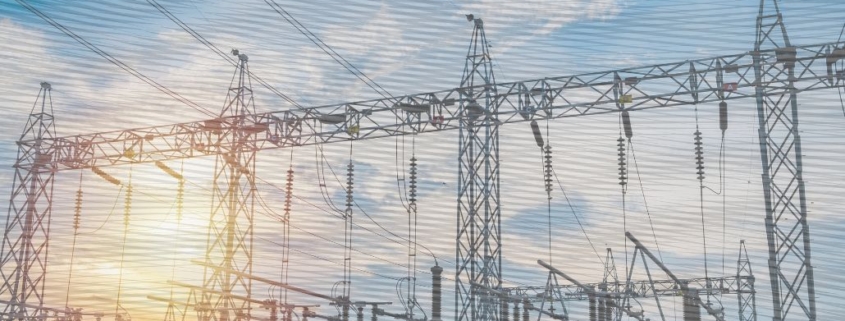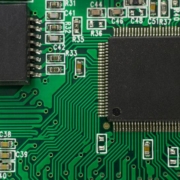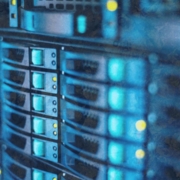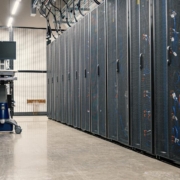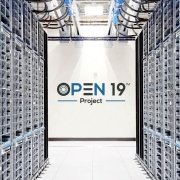Are data centers to blame for power quality issues?
Many grid operators are struggling to meet customer power demands — in both volume and quality. As demand rises, utilities must also monitor and account for customer usage patterns that can degrade power quality (and add costs) for others on the grid. A 2024 Bloomberg analysis revealed a concentration of residential power issues occurring near data center hubs in the US, which signaled a potential new setback for data center community relations.
Correlation alone does not prove data center electrical loads are responsible. In fact, many data centers measure and correct power quality for their own purposes, which also minimizes negative effects on the grid. However, communities have already raised concerns about data centers’ access to power and the value they produce. To ask whether these criticisms are fair misses the point: local authorities will base their decisions on their own perspectives when governing the construction of new capacity.
Grid power quality could become a new community relations problem. The industry can little afford the reputational damage and increased opposition that will follow if voters and regulators suspect data centers are degrading their communities’ grid power. Operators that engage openly with their local communities about the precautions they take to safeguard the grid may reduce opposition to any future expansion.
Degraded power costs money
Engineers use several metrics to describe power quality, but this report will examine total harmonic distortion (THD), a proportional measurement of defects in the AC waveform. Grid power typically contains some THD, and allowable limits are defined in the Institute of Electrical and Electronics Engineers (IEEE) standards. Excessive THD, however, can cause overheating, damage and premature failure in motors and electronics.
Solar and wind energy enter the grid through inverters, which can produce THD. Notably, some of the customer equipment (especially motors and power supplies) most vulnerable to THD also produce it. Customers’ devices can cause harmonic distortion in not just their own building circuits, but also the grid that supplies them. It is typically the utility operator’s responsibility to monitor and correct THD and deliver power that meets IEEE standards. Controlling grid power quality is more difficult than it was decades ago, because there are now more motors, power supplies and other THD-producing loads in residential, commercial and industrial buildings.
Distorted power can stress aging or heavily loaded grid infrastructure and threaten equipment damage for homes and businesses nearby. Unlike larger industrial and commercial sites, residential consumers rarely invest in specialized equipment to monitor and maintain their power quality. If the grid operator does not adequately control THD, ordinary residents bear the cost of replacing damaged computers, refrigerators, washing machines and other devices. When a community is vulnerable to these unpredictable hidden costs, it is more likely to mobilize to resist any suspected culprit.
Data centers stand accused
Bloomberg’s 2024 analysis raises the question: could data centers be degrading power quality for nearby homes? The authors of the Bloomberg analysis (AI needs so much power, it’s making yours worse) compare readings from 770,000 residential THD sensors in Whisker Labs’ US network against a DC Byte database of data center capacity. Locations with many large data centers were more likely to experience excessive THD in residential grid power. Three out of four locations with persistently distorted power are 50 miles (80 km) or less from large data centers; more than half of the sustained high readings are within 20 miles (32 km).
The correlation is clear, but researchers will need significantly more information to determine if data centers are even partially to blame. Other industrial and residential electrical loads can also affect their neighbors with THD. The Bloomberg analysis accounts for certain variables: the effect is present regardless of proximity to city centers or large-scale solar generation inverters.
The homes in locations troubled by poor power quality certainly contain appliances and electronics that contribute to harmonic distortion. However, homes farther from data centers are likely to have similar usage patterns — suggesting that the strongest THD sources are not inside customer homes.
Harmonic distortion is often best addressed near its origin, and data center designers and operators have techniques to do so in their facilities. However, communities with negative perceptions of data centers may act on incomplete information — requiring operators to supplement power quality control with community engagement.
Controlling THD at source
Many data center operators already monitor and maintain power quality in their data centers to prevent failures in both IT and supporting infrastructure. Uncontrolled THD from any source can threaten the resiliency of critical IT systems.
Motors, variable frequency drives (VFDs), IT power supplies and other electronics in data centers can also act as sources of THD. Operators often mitigate the distortion from these devices to protect the rest of their equipment. These efforts to reduce THD inside the data center can also minimize negative effects on power quality for the surrounding community.
Data center UPS systems commonly operate in “double conversion” mode, which changes incoming AC power to DC, then back to AC. This protects IT from harmonic distortion and other power defects. The reverse is also true: the UPS can prevent connected equipment from introducing THD upstream into the grid. Static UPS systems operating in a non-inverting “eco” mode, and diesel-rotary UPS designs, can also reduce THD to the grid with power-filtering components. However, UPS double conversion will tend to be the most effective method to prevent introducing distortion into the grid power feed. AI training clusters are not inherently more likely than other IT to produce THD or to use UPS without double conversion. More data is needed to understand the THD contribution of AI workloads.
Cooling and mechanical equipment is typically not isolated from the grid by UPS. Drive isolation transformers for VFDs, harmonic mitigating transformers, line reactors, and active harmonic filters can all reduce THD originating from data center equipment. This maximizes both performance and lifespan of data center assets — and reduces the risk of burdening the community with poor power quality.
The intensity of THD entering the grid from a data center or any other customer is typically proportional to the electric current passing through the source equipment. The power consumption for AI training and other IT workloads is high enough to attract questions about potential effects on power quality for communities. It is not yet clear, however, whether data centers produce more distortion than industrial loads of similar scale.
Correcting distorted reputations
Data center operators produce value for users and communities but, often, they must proactively engage with local residents to communicate this value and listen to their concerns. Large data centers consume so much energy that their effect on harmonic distortion in the surrounding grids can be significant. When communities evaluate proposals to expand data center capacity, any perception of having to sacrifice power quality will affect their decision.
Any large commercial and industrial energy consumer may have opportunities to minimize the THD they produce in the grid, but the data center industry may need to lead this effort in locations where its reputation is already imperiled.
Operators can review their data center designs to ensure that all THD mitigating equipment is in good operating condition and sized appropriately. Many operators are already using best practices to minimize harmonic distortion in their facilities and surrounding grids. Operators that are not yet measuring THD inside their facility or in grid power feeds may consider adding sensors to do so. Better data can promote well-informed maintenance decisions and community relations.
Data center organizations may need to invest more in their community outreach programs to publicize how their ongoing efforts are protecting power quality for all the consumers in their neighborhoods. Organizations seeking to integrate into their communities for mutual benefit in this way may find greater success securing approval for future capacity expansion.
The Uptime Intelligence View
A 2024 analysis revealed a correlation between concentrated data center capacity and poor power quality (excessive harmonic distortion) in the surrounding communities’ grids. Some complicating variables (such as proximity to city centers or large-scale solar generation) are accounted for — but not all.
This correlation alone does not prove data center facilities degrade grid power quality. However, the pattern is likely sufficient to damage community relations and further increase scrutiny of data centers’ resource stewardship. Operators that diligently mitigate THD in their facilities may consider engaging with their neighbors more proactively and explaining how these techniques protect power quality for the community.
Thanks to Chris Brown, Chief Technical Officer, Uptime Institute who was consulted for this report.

